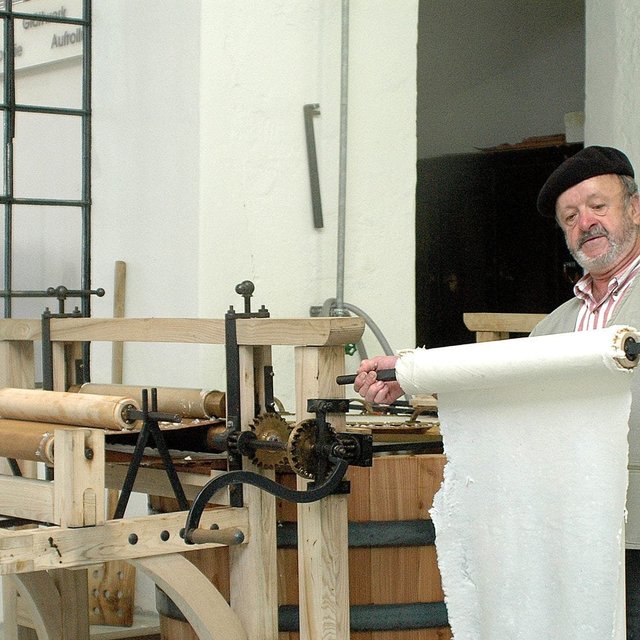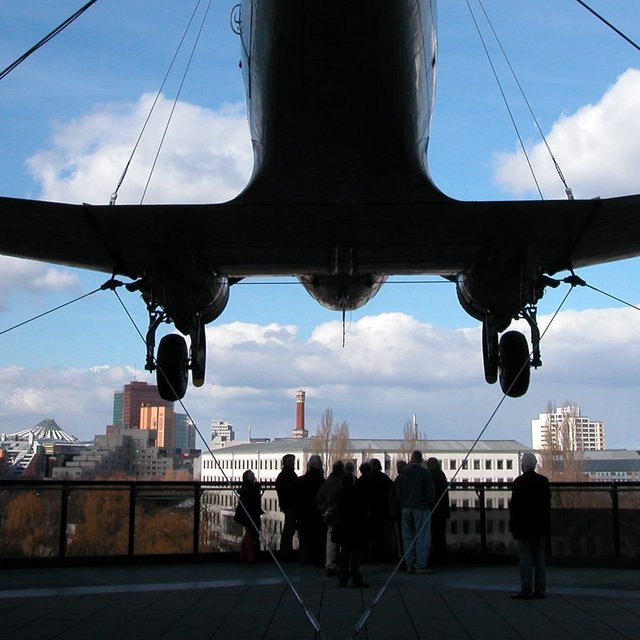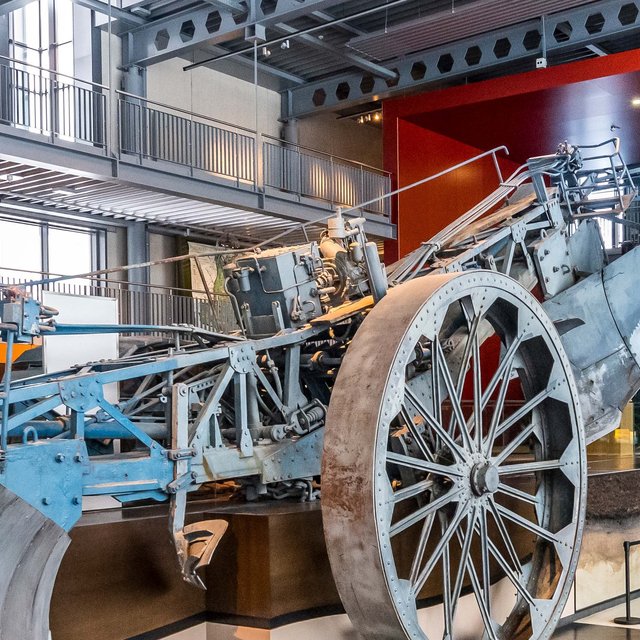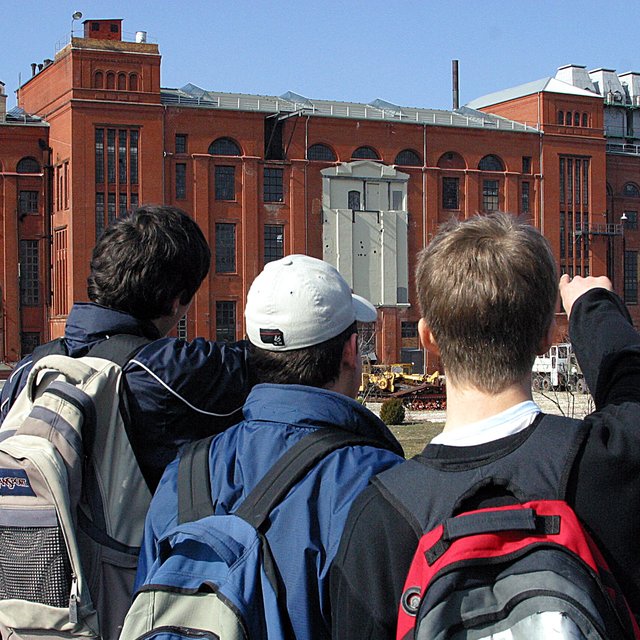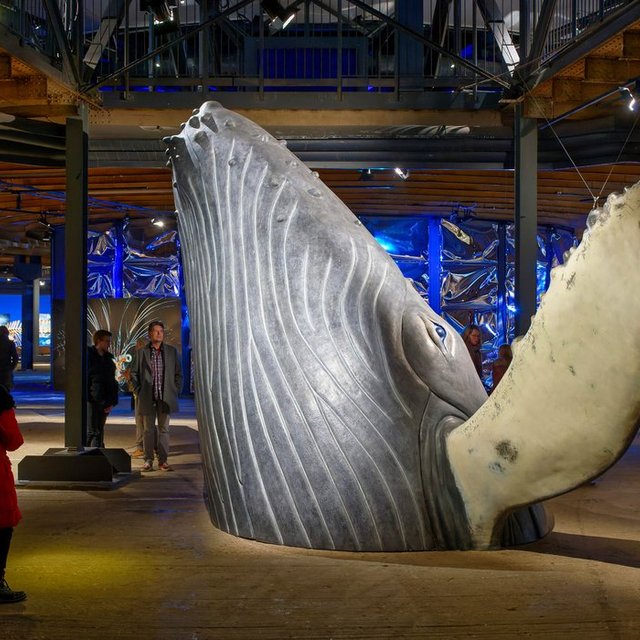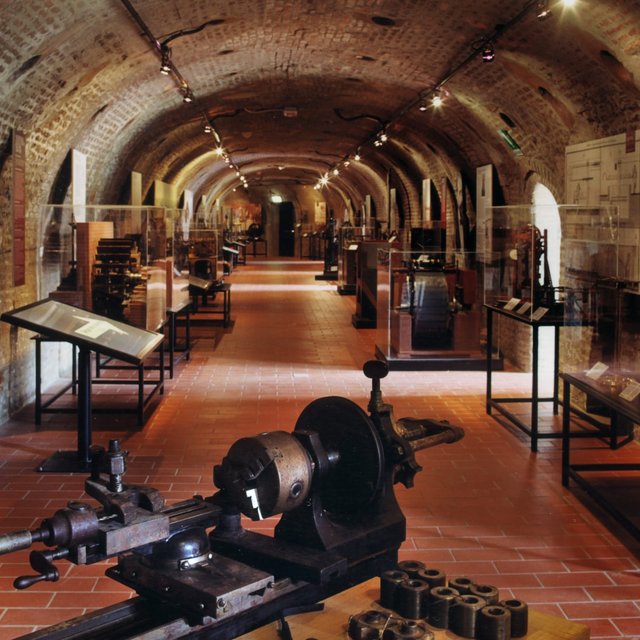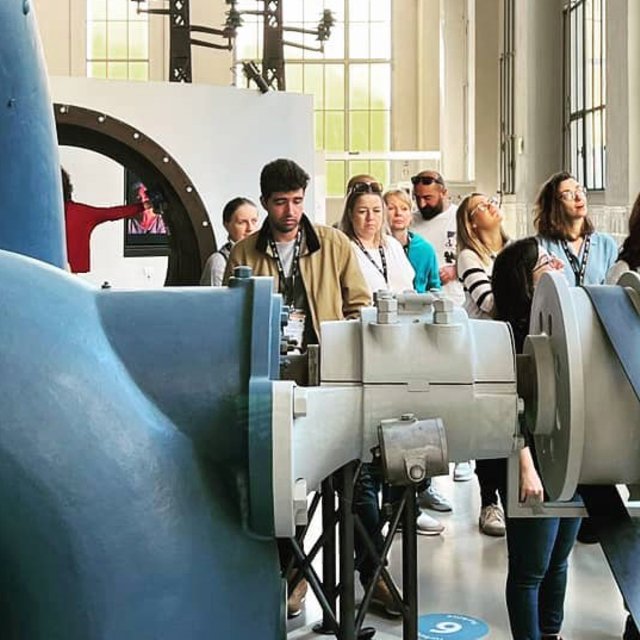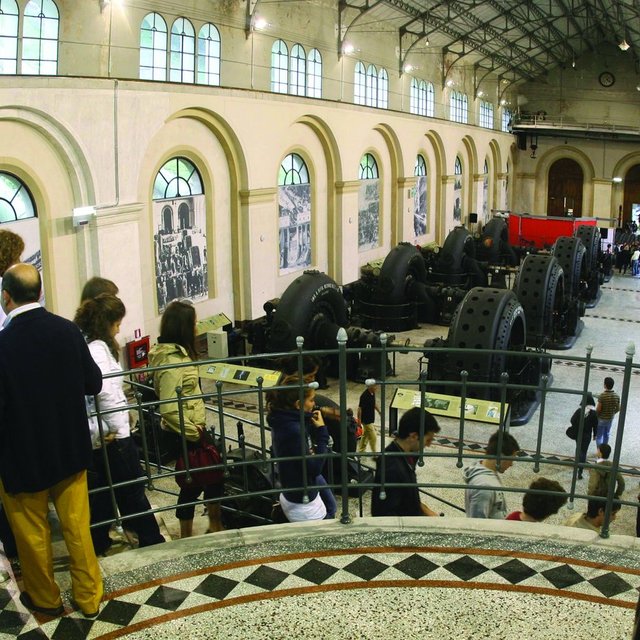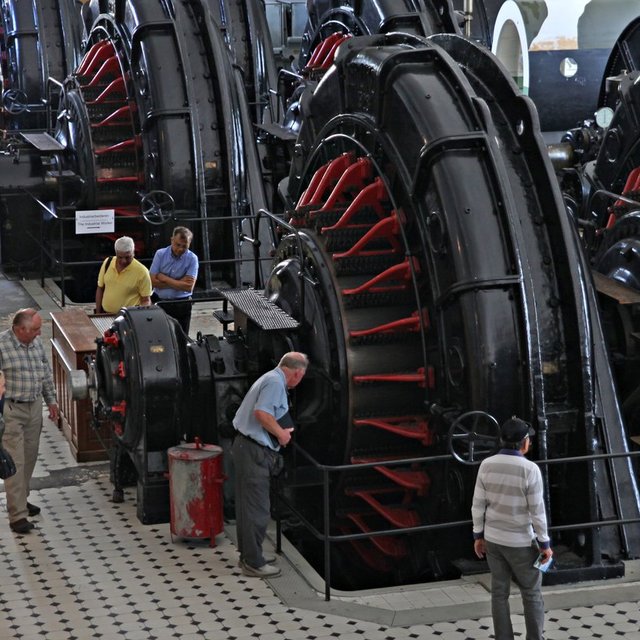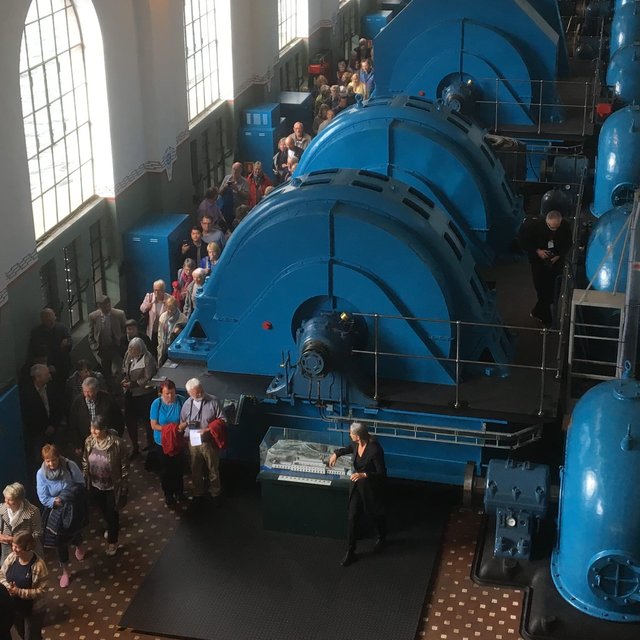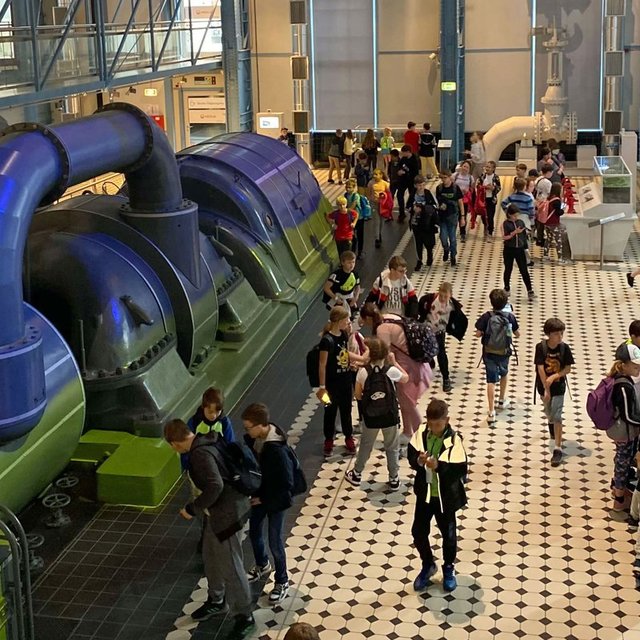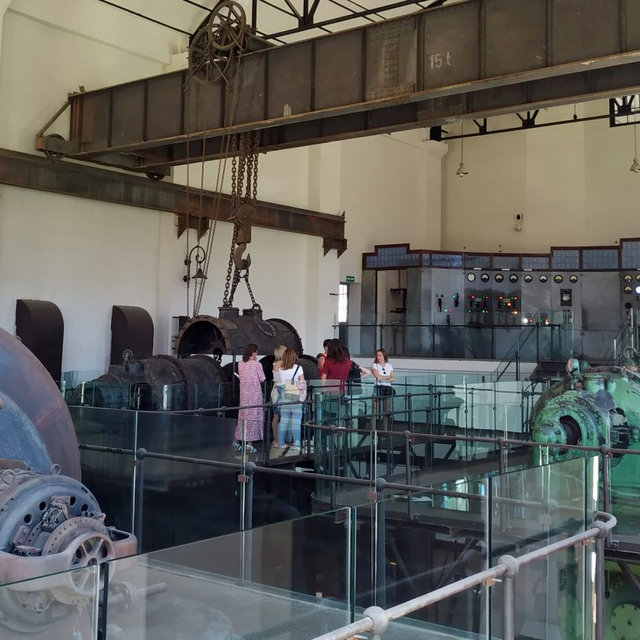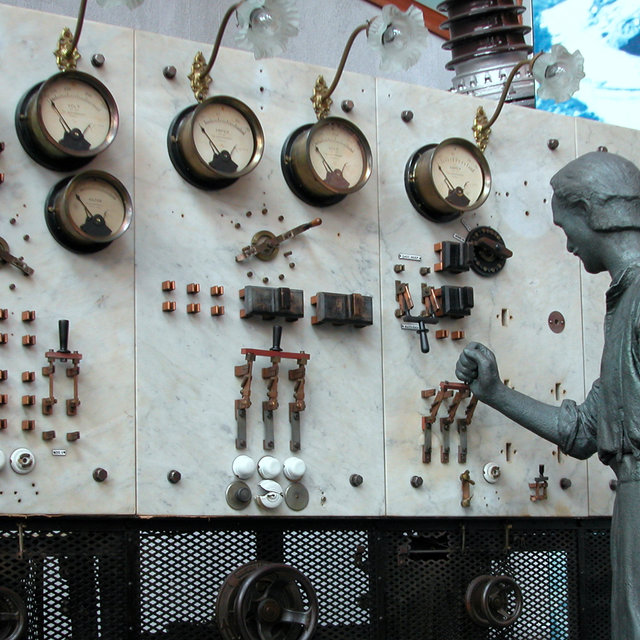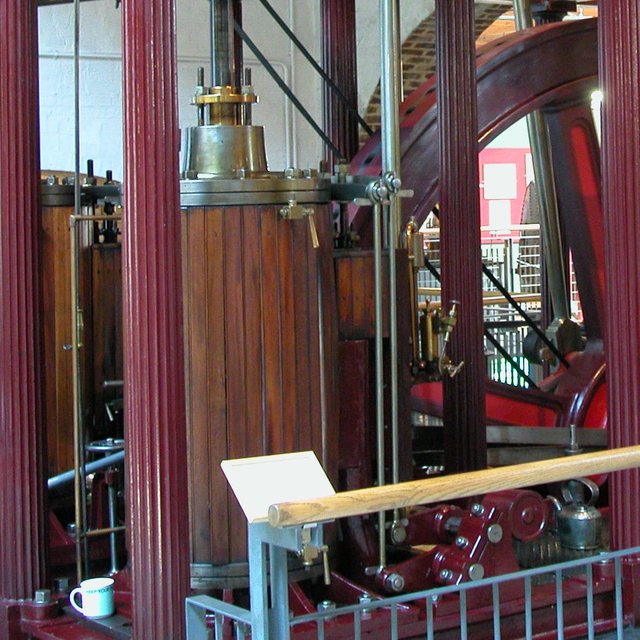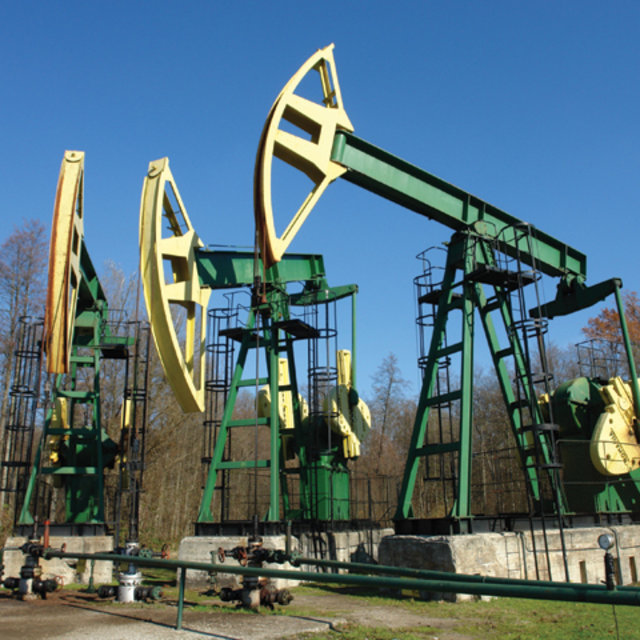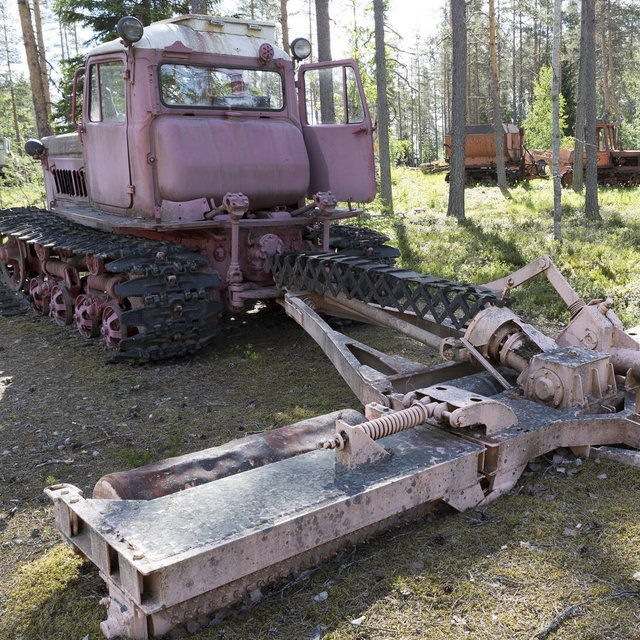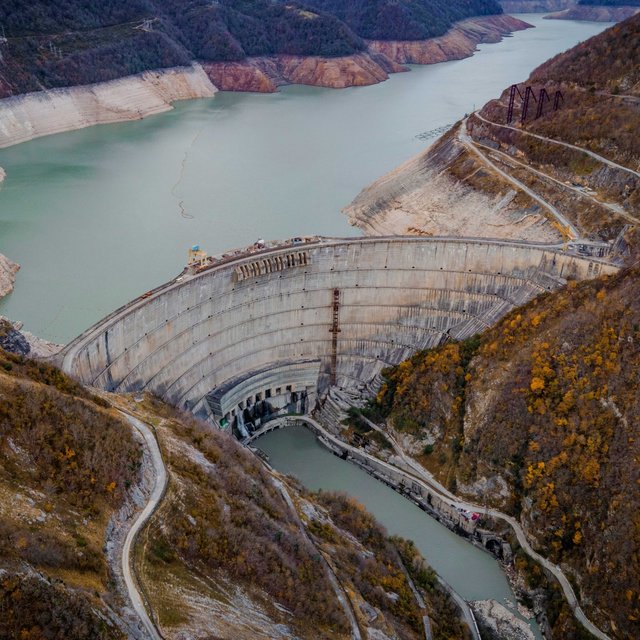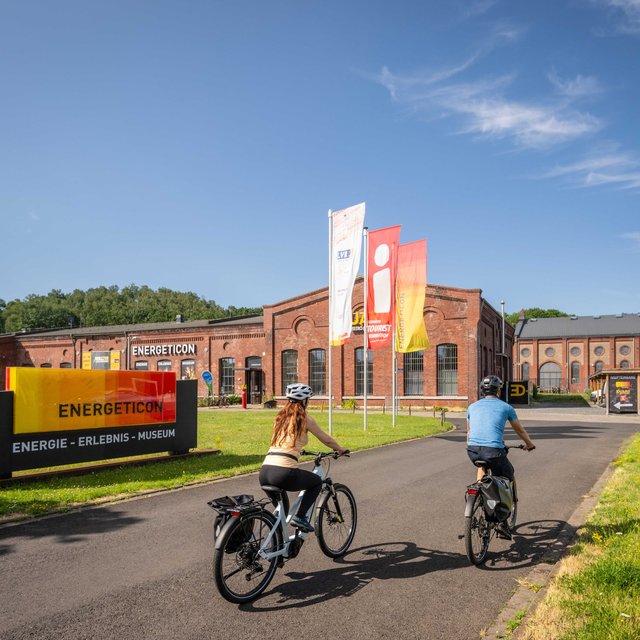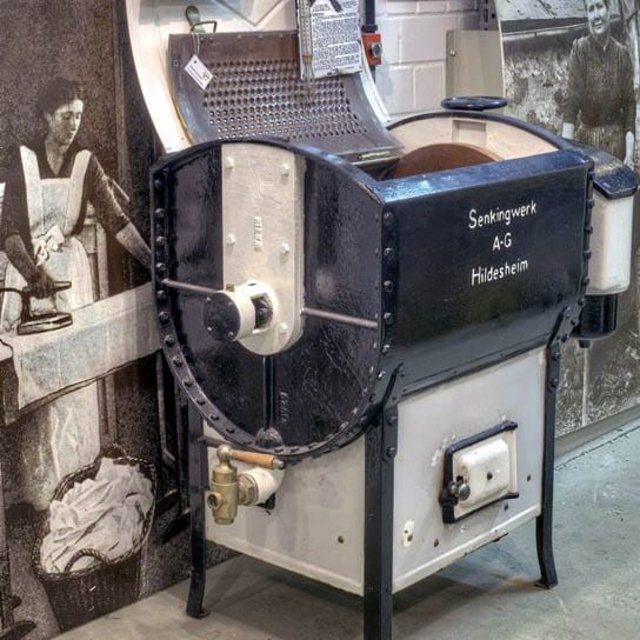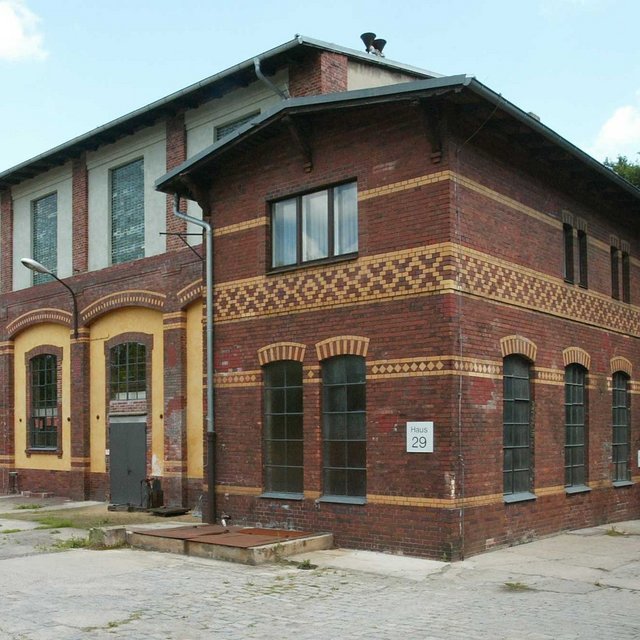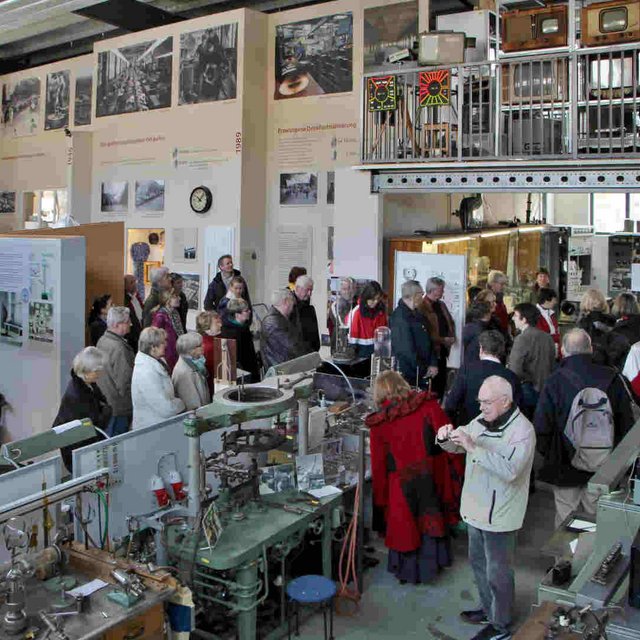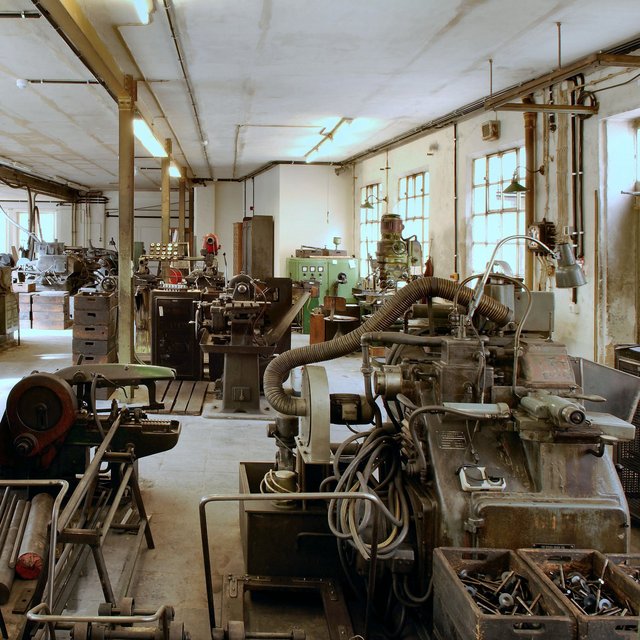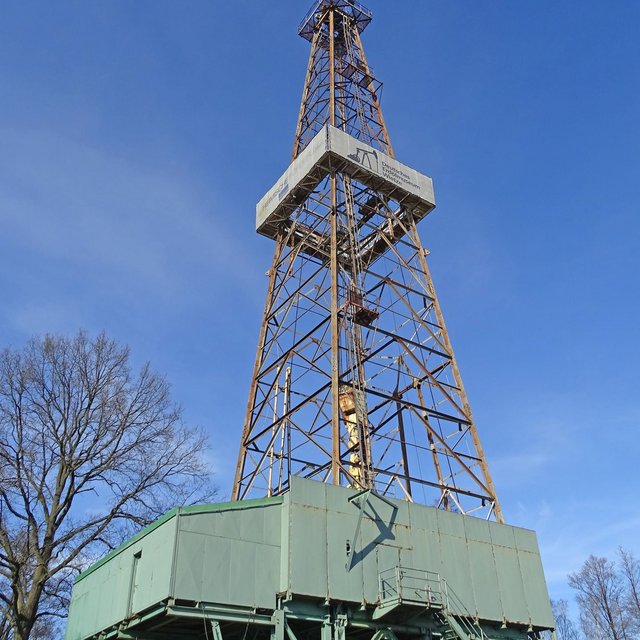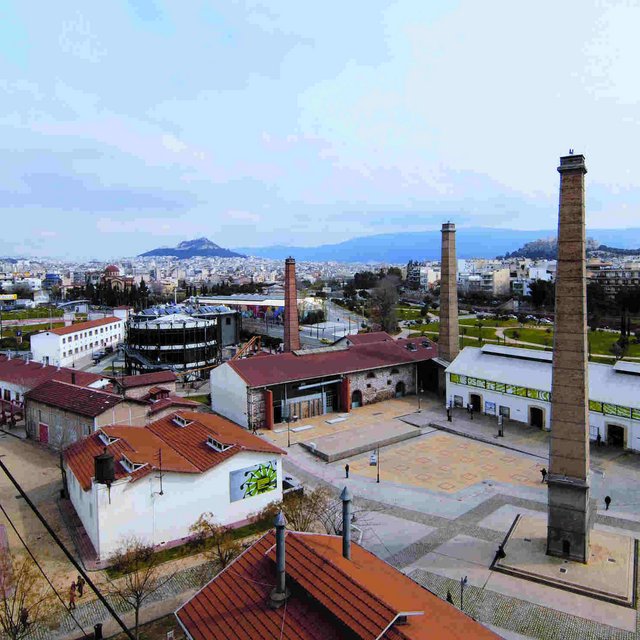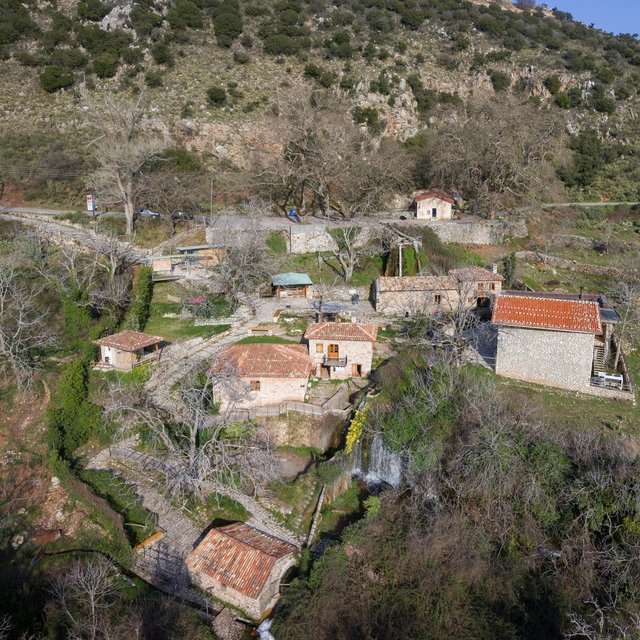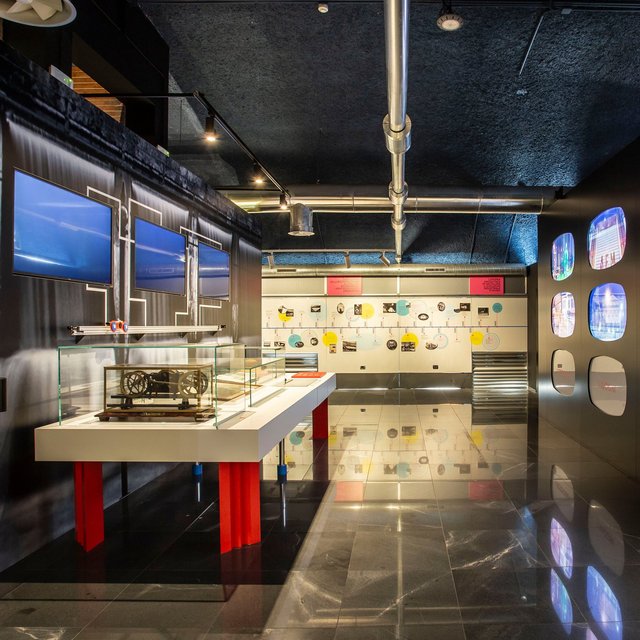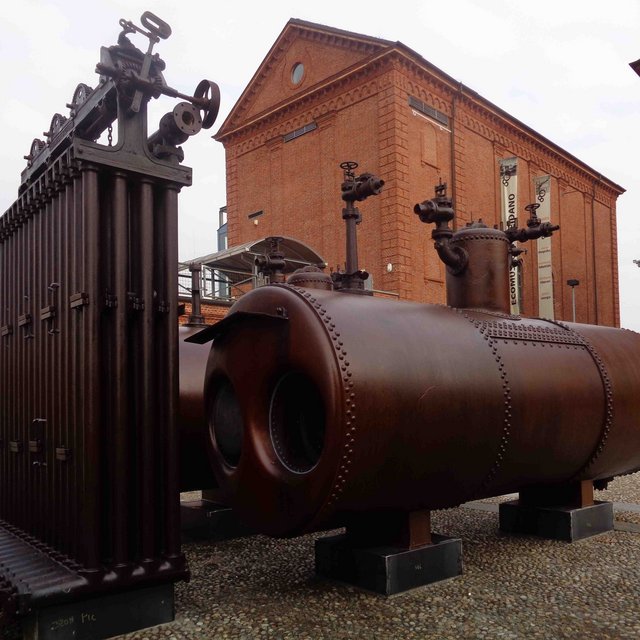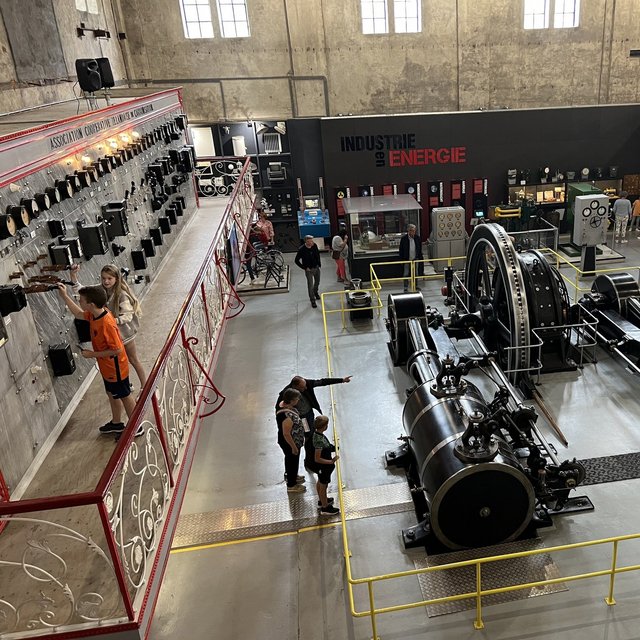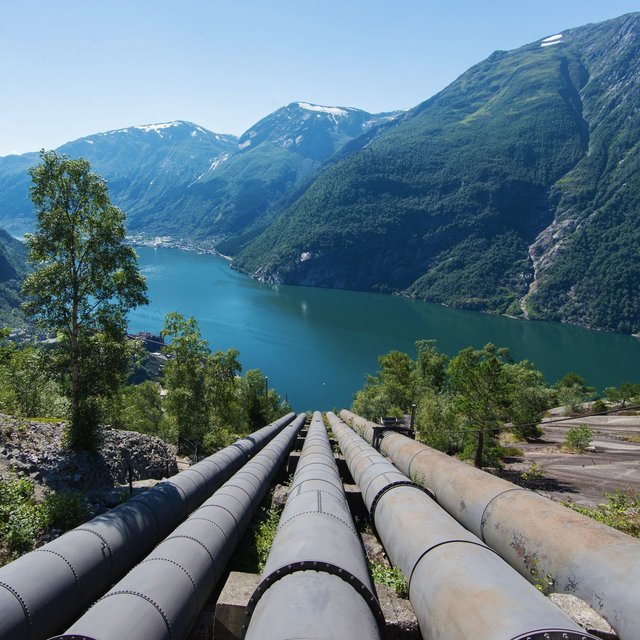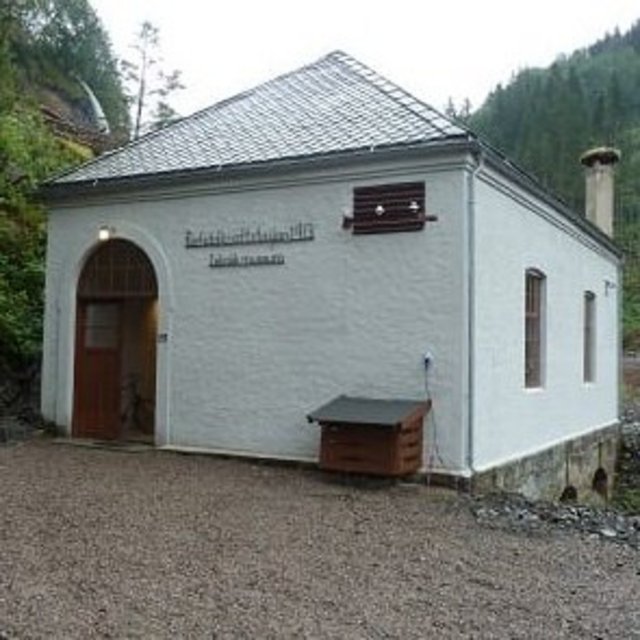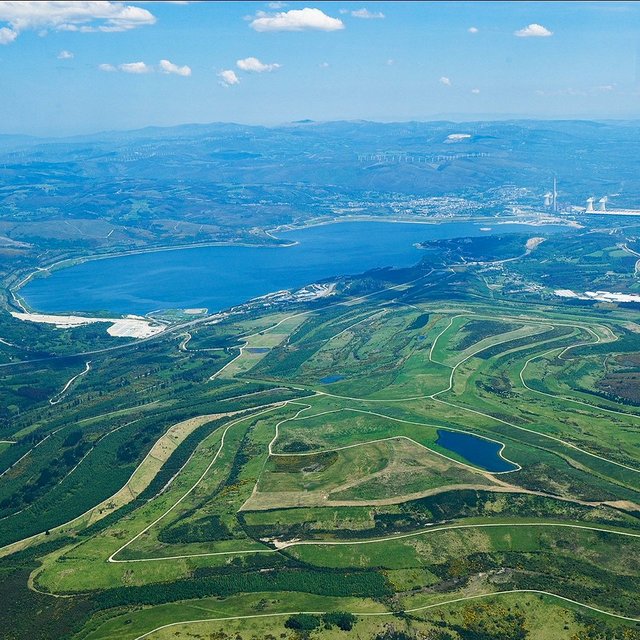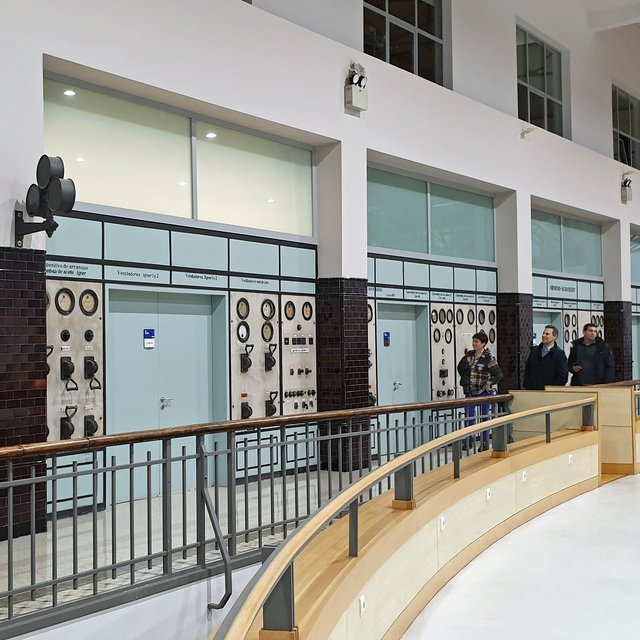European Themeroute | Application of Power
From the Middle Ages until the late 19th century water and wind supplied the driving power for a huge variety of engines. Windmills dominated the flat lands of northwest Europe. In the 18th century around a thousand mills were standing alongside the banks of the River Zaan, near the trading centre of ... more
 What drives us forward. European Theme Route Energy
What drives us forward. European Theme Route Energy
From the Middle Ages until the late 19th century water and wind supplied the driving power for a huge variety of engines. Windmills dominated the flat lands of northwest Europe. In the 18th century around a thousand mills were standing alongside the banks of the River Zaan, near the trading centre of Amsterdam. They were used to process timber, flour and paper, and not least raw materials from abroad like tobacco and cocoa. For this reason the region around Zaandam is widely recognized as being one of Europe's earliest industrial areas. Around the middle of the 18th century people a small wind wheel began to be added to the mills: this enabled the blades to turn automatically in the direction of the wind. At the end of the century an English engineer invented a mechanism to enable the windmills to adapt to different wind strengths. He divided the blades into shutter-like segments which could be opened or closed as necessary.
There were more than 500,000 waterwheels in Europe at the time. They were used to drive all sorts of machinery ranging from paper mills, oil mills and sawmills to forging hammers. Later on, huge high-power wheels - some made of iron – supplied power to large textile factories and ironworks. Where water was scarce, horizontal waterwheels proved their worth – and these led to decisive innovations. In 1833 a French engineer by the name of Benoit Fourneyron invented the water turbine. This was more efficient because it channelled the water to flow alongside the axis without coming up against one vane after another as in waterwheels, but several at the same time.
Improvements primarily came from the agricultural areas of the USA which were rich in water. The Francis turbine, named after its inventor, was created in the textile centre of Lowell: it had movable vanes which enabled it to react better to the changing amounts of water. Finally an American by the name of Lester Pelton achieved a very high rate of revolutions by directing the concentrated power of a jet of water on to the turbine vanes. Nowadays his turbine is primarily used in mountain power stations where it is possible to exploit high waterfalls to the full.
It was only after 1870 that steam power began to replace water power. This major invention has a long prehistory: the first working model of a steam engine, built by Thomas Newcomen in 1712, was put into action to pump off pit water in a coalmine near Wolverhampton. Newcomen blew hot steam from below into a cylinder, thereby driving a piston upwards. He then sprayed cold water into the cylinder and the condensed steam produced a vacuum. The upshot was that the piston was then driven back downwards by pressure from the air outside.
Since the cylinder was being alternately heated by steam and cooled by water, a lot of energy was lost in the process and the engines needed a great deal of fuel. This is where improvements began. In 1769 James Watt made history by separating the condensing chamber from the cylinder. In this way he could keep the cylinder constantly hot and the condensing chamber constantly cool, thereby saving fuel. Next, with the aid of transmission he replaced the up-and-down movement by a rotation. Nonetheless the steam engine was still unable to compete with the continual rotation of large waterwheels. Watt rebuilt them in such a way as to enable the steam to drive the piston in both directions. He not only blew steam into the cylinder from below in order to drive the piston upwards, but also from above in order to drive it back down again. This resulted in a considerably smoother movement.
Starting in 1785 the Boulton & Watt factory began to deliver 'double-acting' steam engines. These proved to be the first really competitive universal engines, because they could be used on all sites independent of water or wind. For this reason the steam engine is regarded as the mother of industrial cities, which now began to shoot out of the ground. Steam power began its triumphal march in the booming textile industry, before moving over to coal mines and steelworks.
The next fundamental improvement took place around a hundred years later, once more in Great Britain, when Charles Parsons succeeded in directing the steam onto the vanes of a rotor so that the power could immediately be converted into a very quick rotary movement. The 1884 steam turbine is still regarded as the ideal method of producing electricity. Only in mountainous regions are water turbines more efficient.
Only in the 1880s did steam begin to be replaced by electrical power, even though the basic knowledge went back to the first half of the century. At that time the Englishman Michael Faraday discovered that you could create electricity in a wire-wound coil if it was rotated between the poles of a powerful magnet. This was the underlying principle behind the generator, known at the time as a dynamo, which could convert mechanical power into electrical power. The discovery only became economically viable after several experimenters realised that it was possible to maintain the magnetic field solely with the help of the electricity produced, without the need for any additional external source of electricity.
Following the so-called dynamo-electric principle, companies like Siemens & Halske in Berlin and the Belgian Théophile Gramme company in France began to build dynamo engines to drive things like arc lamps, which were able to produce a very bright light when placed between two carbon electrodes. It was only with the invention of the light bulb by Thomas Edison that a greater demand for electrical power set in.
The American discovered that carbonised bamboo filaments enclosed in glass did not catch fire but radiated on a continual basis. Carbonised filaments were later replaced by tungsten filaments. Edison, who was more a manager than an inventor, always had his eye on the market. He not only produced light bulbs but also planned power stations and grids. In 1882 he opened a central electricity work in New York. Companies in European countries were quick to follow: in Germany for example, the German Edison company (Deutsche Edison-Gesellschaft or DEG), which later became AEG.
Edison’s greatest competitor was gaslight because every industrial country already possessed a gas-supply network. Gas was produced by coal and first used for lighting purposes before being used for domestic heating and cooking. Although electric light became the major source of illumination in private households, gasworks remained an indispensable part of practically every local authority for around 100 years.
Around the turn of the 20th century, industry finally began to abandon steam power in favour of electricity: the triumphal march of electricity had finally begun. Since electricity was mainly produced by means of steam turbines, coal remained the most important source of power until the rise of the oil industry.
Even before the middle of the 19th century people from regions as far apart as Galicia and Baku, Alsace and Sicily where producing petrol from oil sources in order to fuel lamps. In 1840 a refinery was opened in Romania, and another in 1859 in Poland. There was a particularly large demand for petroleum in the west of the USA, where there were no gas supplies for the new settlers. The oil industry expanded rapidly - in Europe too – after Edward Drake successfully drilled for oil in Pennsylvania in 1859. Petroleum continued to be used for lighting purposes and the invention of the combustion engine towards the end of the century opened up new areas of use for the residual ingredients of crude oil: petrol and diesel.
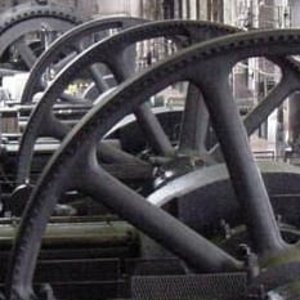
ERIH Anchor Points
Austrian Museum of Papermaking at Old Factory
Museumsplatz 1
4662
Laakirchen, Austria
German Technical Museum
Trebbiner Strasse 9
10963
Berlin, Germany
Emsland Moormuseum
Geestmoor 6
49744
Geeste, Germany
Saxon Museum of Industry | Knappenrode Energy Factory
Ernst-Thälmann-Straße 8
02977
Hoyerswerda, Germany
Gasometer
Arenastraße 11
46047
Oberhausen, Germany
Museum of Industrial Heritage
Museo del Patrimonio Industriale
Fornace Galotti
Via della Beverara 123
40131
Bologna, Italy
Museum of Hydroelectric Energy
Museo dell'energia idroelettrica
Via Roma 48
25051
Cedegolo, Italy
"Antonio Pitter" Power Plant Museum
Museo dell'ex Centrale Idroelettrica "Antonio Pitter"
Via Volta 27
33086
Malnisio di Montereale Valcellina, Italy
Norwegian Industrial Workers Museum World Heritage Site
Norsk Industriarbeidermuseum
Vemork
3661
Rjukan, Norway
Kraftmuseet. Norwegian Museum of Hydropower and Industry
Kraftmuseet. Norsk vasskraft- og Industristadmuseum
Naustbakken 7
5770
Tyssedal, Norway
EC1 Łódź - City of Culture
EC1 Łódź - Miasto Kultury
Ul. Tuwima 46
90-021
Lódź, Poland
The Light Factory. Museum of Energy
La Fábrica de Luz. Museo de la Energía
Avenida Libertad 46
24404
Ponferrada, Spain
National Museum of Science and Technology of Catalonia
Museu Nacional de la Ciència i la Tècnica de Catalunya (MNACTEC)
Rambla d’Ègara 270
08221
Terrassa, Spain
London Museum of Water & Steam
Green Dragon Lane
Brentford
TW8 0EN
London, United Kingdom
Member Sites ERIH Association
The black gold of Moslavina tour
Crno zlato Moslavine
Information:
Ivanić-Grad Tourist Board
Moslavacka 11
10310
Ivanić-Grad, Croatia
Aitoneva Peat Museum
Aitonevan turvemuseo
Aitonevantie 358
39820
Kihniö, Finland
Enguri Hydro Power Dam – ENGURI Attractions
Office:
18, Kakabadze street
0108 Tbilisi
Site address:
1 Tsimintia street
5223
Jvari, Georgia
Energeticon
Konrad-Adenauer-Allee 7
52477
Alsdorf, Germany
Energy Museum
Teltowkanalstraße 9
12247
Berlin, Germany
Herzberge Boiler House Museum
Herzbergstraße 79
10365
Berlin, Germany
Industriesalon Schöneweide
Besucherzentrum für Industriekultur
Reinbeckstraße 9
12459
Berlin, Germany
Lauf Industrial Museum
Sichartstrasse 5-25
90480
Lauf an der Pegnitz, Germany
German Petroleum Museum
Schwarzer Weg 7-9
29323
Wietze, Germany
Technopolis Industrial Gas Museum
Τεχνόπολη
Gazi
Pireos 100
11854
Athens, Greece
Open-air water-power museum
Kefalari Ai-Yannis
220 07
Dimitsana, Greece
AEMuseum
Casa dell’Energia e dell’Ambiente – Fondazione AEM-Gruppo A2A
Piazza Po, 3
20144
Milan, Italy
Freidano Ecomuseum
Ecomuseo del Freidano
Via Ariosto 36-bis
10036
Settimo Torinese, Italy
Zeeland Industrial Museum
Industrieel Museum Zeeland
Westkade 114
4551 LA
Sas van Gent, Netherlands
Kraftturisme i Vestlandsregionen project
Information:
'Amland Reiselivsutvikling'
Trond Amland
Kjenndalsasen 17
5225
Nesttun, Norway
Refsdal Power Plant 1913
Refsdal Kraftstasjon
Tourist Information of Vik
c/o Blix Hotell
Sentrumsgata
6893
Vik i Sogn, Norway
As Pontes Industrial Experience
As Pontes Experiencia Industrial
Parque municipal, s/n
15320
As Pontes de García Rodríguez, Spain
Ilgner Electrical Transformers Building
Avenida Altos Hornos de Vizcaya, 33
48901
Barakaldo, Spain


